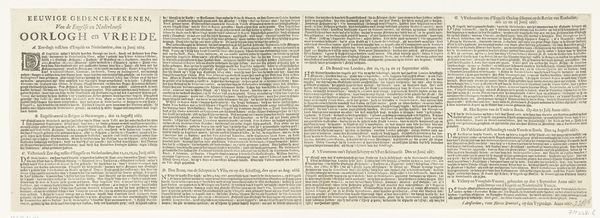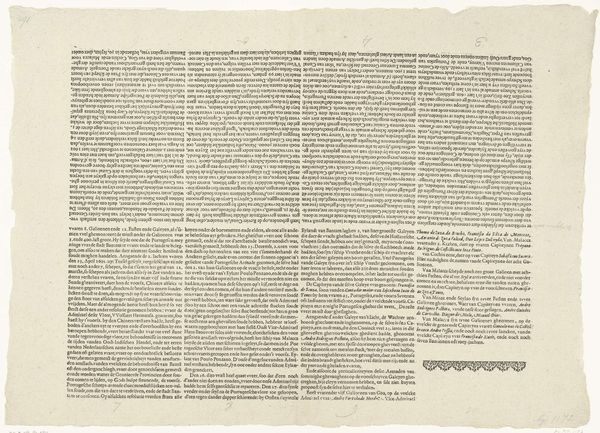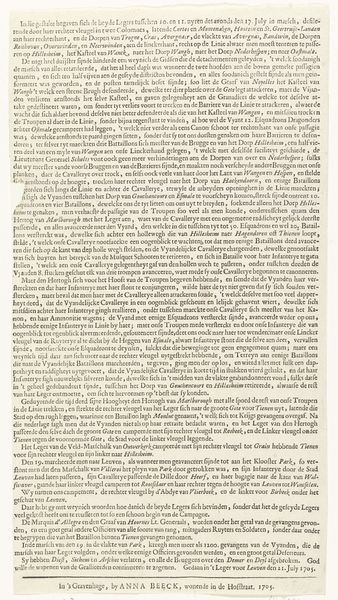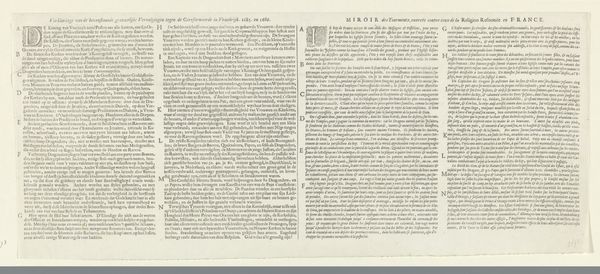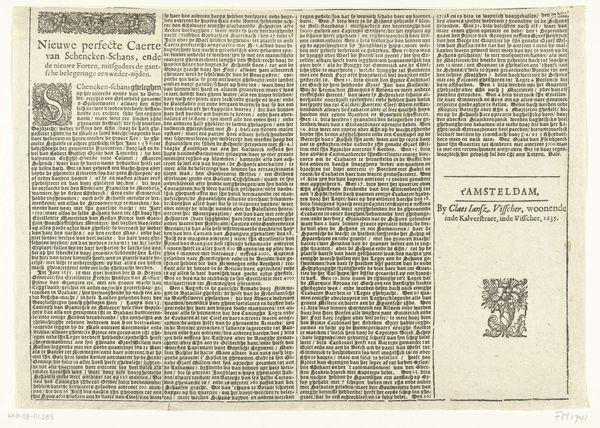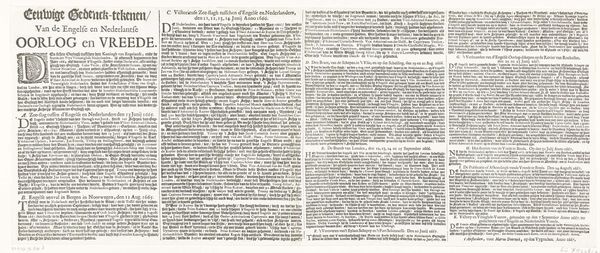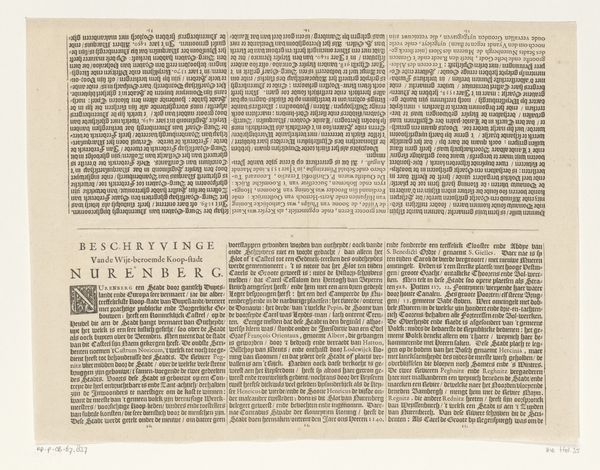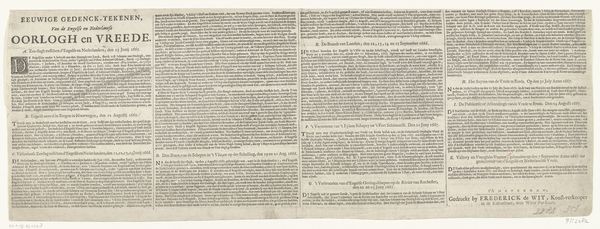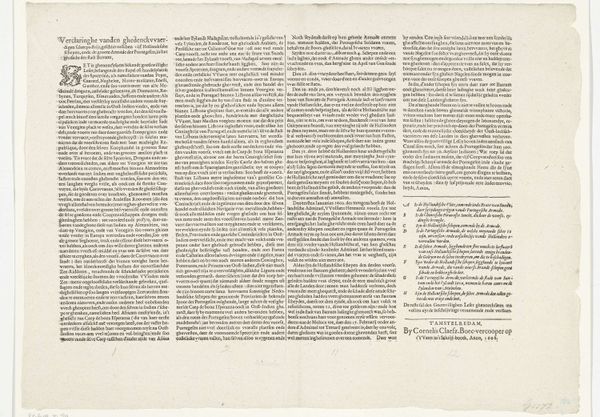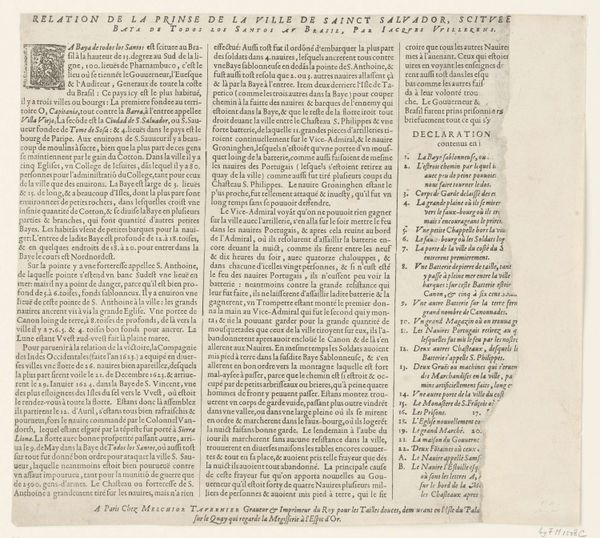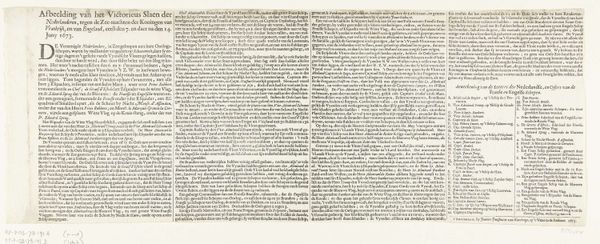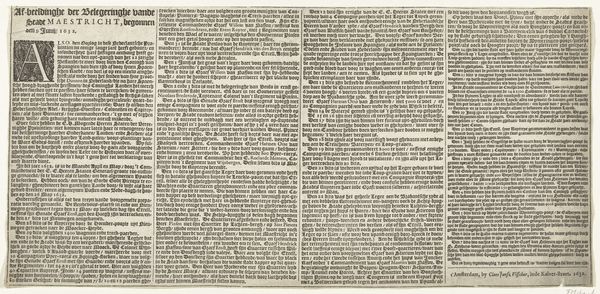
print, paper, typography
#
yellowing
#
narrative-art
#
dutch-golden-age
# print
#
small type
#
editorial typography
#
paper
#
text
#
typography
#
journal
#
newspaper layout
#
stylized text
#
thick font
#
genre-painting
#
handwritten font
#
classical type
#
word imagery
Dimensions: height 185 mm, width 605 mm
Copyright: Rijks Museum: Open Domain
This printed text sheet, made by Hugo Allard in 1659, commemorates the relief of Copenhagen. While not a visual image in the traditional sense, the text itself serves as a symbolic representation of historical events, mirroring a tapestry or chronicle. Note how specific phrases and names recur throughout, anchoring the narrative. These aren’t merely descriptive; they are mnemonic devices, invoking the weight of history and the collective memory of conflict and triumph. The repetitive recounting of the event mirrors the function of ritual—a psychological reenactment designed to reinforce cultural values and identity. We find this repetition echoing in ancient epics, passed down orally and visually, each retelling a reinforcement of cultural narratives. Even in modern media, recurring motifs in film and literature serve a similar purpose, tapping into our primal need for order and understanding through familiar symbols. Such texts, far from being mere records, become powerful forces, engaging viewers, or listeners, on a deep, subconscious level, stirring emotions and reinforcing the narratives that bind societies together. These cyclical progressions of symbols resurface and evolve, bearing new meanings across historical contexts.
Comments
No comments
Be the first to comment and join the conversation on the ultimate creative platform.
